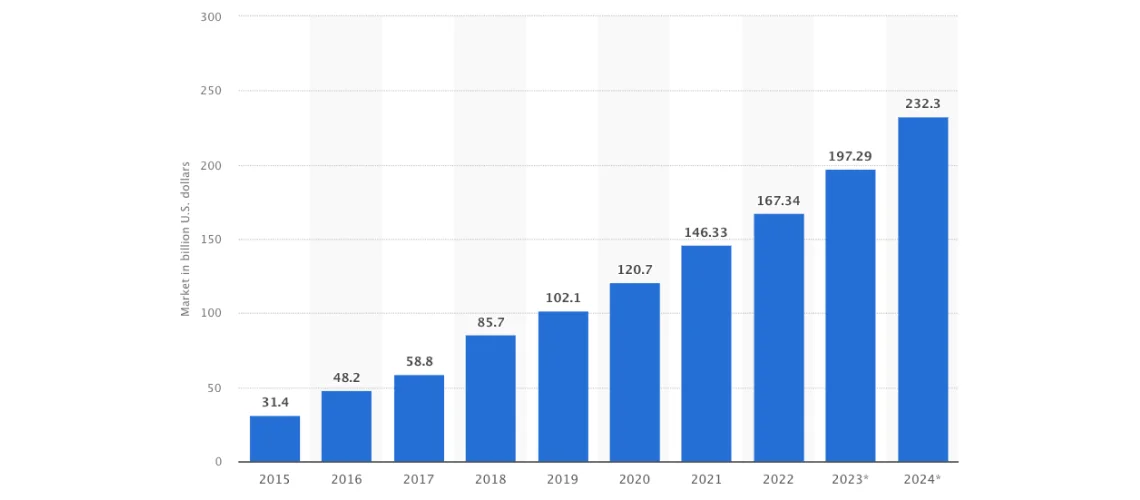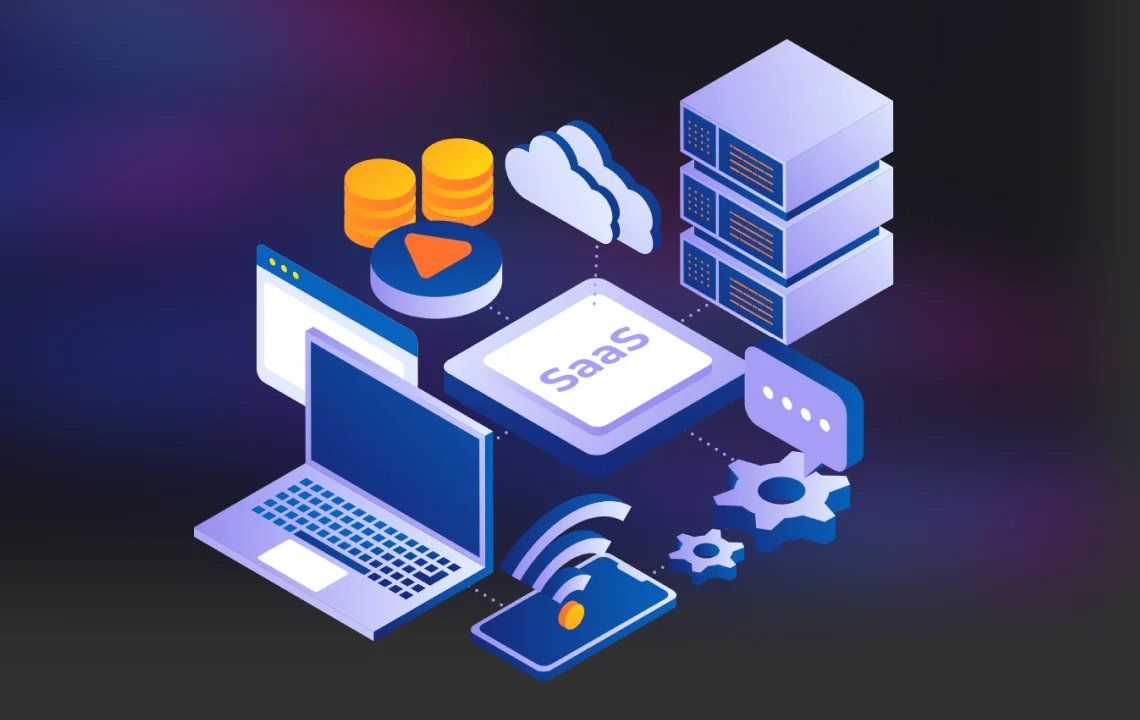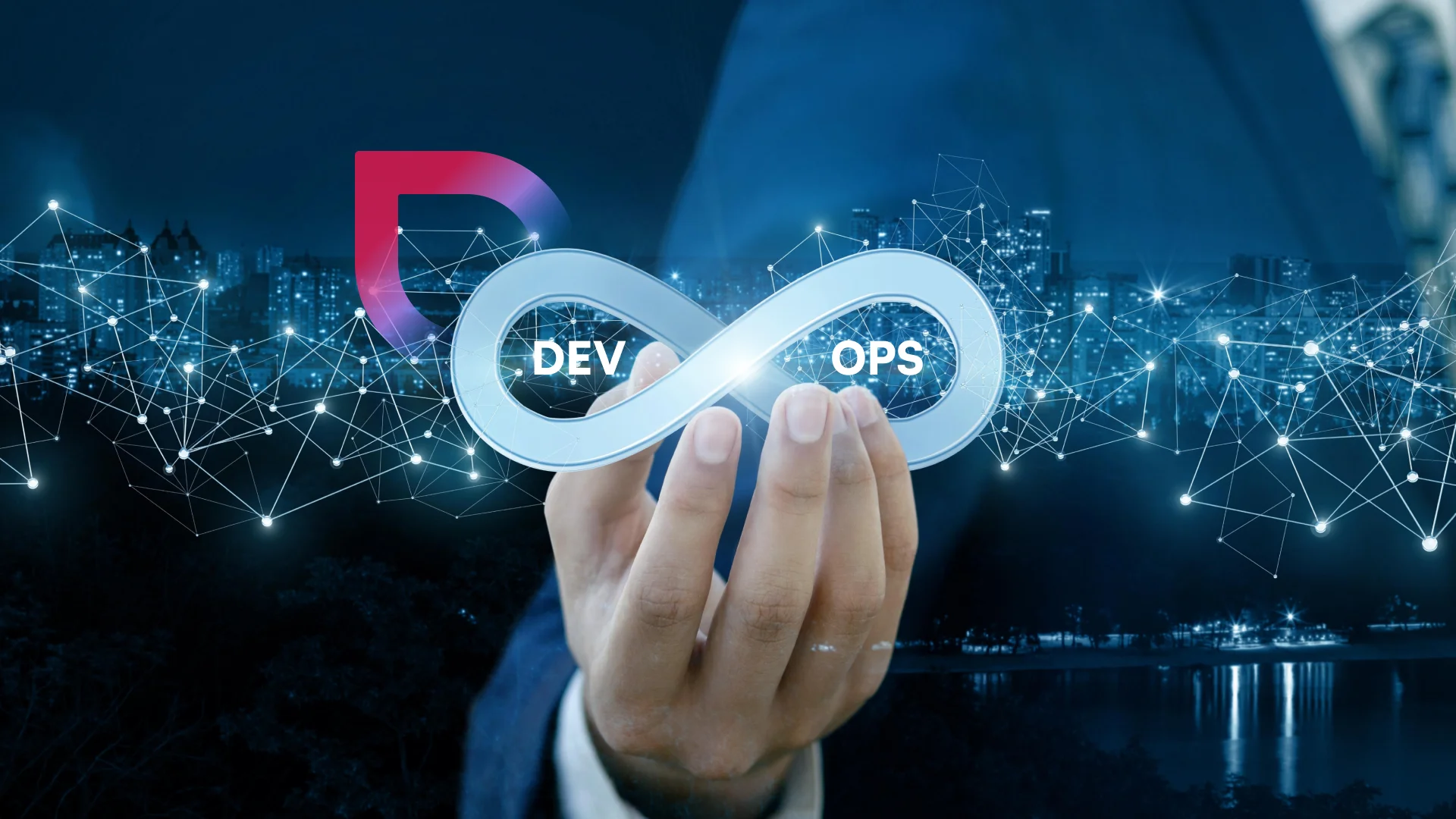SaaS App Development: A Detailed Guide
- DevOps
- October 20, 2022
You have already made your way to business growth if you are planning for a SaaS app development. In the past few years, SaaS has not been the same as it was a decade ago; it has been a well-received software delivery model.
As per the latest survey by Statista, in 2023, the SaaS market is estimated to be worth approximately 197 billion USD and is expected to rise to 232 billion USD by 2024.

At the same time, creating a SaaS app requires groundwork, research, and a detailed guide to create the app. In this guide, you will get to learn everything you need to know about how to create a successful SaaS application. Let’s get started from scratch.
What is a SaaS Application?
SaaS is an acronym for software as a service, this web-based application is absolutely different from conventional applications. Its subscription-based feature allows you to use it without having to install it locally on your device, which means you can use it on any web browser as long you have an internet connection.
Cloud infrastructure is the reason why SaaS apps are pretty easy to access. SaaS apps run in a cloud environment; the private or public cloud is also where a SaaS application is being created and deployed.
Read also: IaaS vs PaaS vs SaaS: Major Differences Between Cloud Service Models
Market Overview of the SaaS App
The proliferation of the SaaS model across the globe is indeed notable. About a decade ago, the concept of SaaS was not much appreciated and now it’s gaining traction and absorbing the market and how. Here are certain stats that are a testament to the same:
- According to the report of Statista, Italy, the Netherlands, and Belgium have become the top 5 SaaS European market revenue countries, each forecast to generate between €1.6 billion and €4.1 billion by 2025.
- Japan’s SaaS market value is projected to surpass ¥1.5 billion in 2023.
- Gartner predicts that by 2026, public cloud spending is estimated to exceed 45% of all enterprise IT spending.
The surge of profit this industry is gaining is pretty astounding, companies are considering SaaS app development on priority for their next step toward business growth. These skyrocketing figures of profit are an opportunity to step into this dynamic market.
Why is SaaS App the Key to Rapid Business Growth?
As you know, SaaS offers many reasons for businesses to have dedicated SaaS solutions. To put some more emphasis on it, we have listed a few benefits of developing a SaaS application for your business:
Seamless availability
What SaaS apps set beyond the traditional apps is their seamless availability. As mentioned before; you can have access to it anytime and anywhere as long as you have an internet connection with you.
As the apps are hosted in the cloud, the SaaS CRM is especially useful for salespeople who spend most of their time in the field.
If we circle back to the question that how it benefits your business; people are more likely to appreciate the software that does not compel them to spend time on installation formalities and enables them to use it instantly.
Of course, the usage ratio of the app shoots up and becomes a winning moment for the business.
Expand and Integrate as Per your Requirements
Back to the time when the fear of adopting a new software would haunt us by clashing with the system, especially the programs you were used to.
Now that we have seen technology evolve over the years, users of SaaS CRM apps can integrate with the already available software on the market and extend their CRM solution just as an onsite customer would.
This leads you to continue with your current working pattern without having to worry about the technical clash.
Improved Security
While using any application, users are mainly concerned about their privacy. If the security is not efficient enough, users appear to lose interest in the product in no time.
But it’s not the same when it comes to SaaS apps, since a SaaS vendor is responsible for the maintenance of the data that a customer entrusts them with. The matter of security becomes pretty crucial and the data of the customer is properly taken care of.
Having seen the efficiency of the security services that SaaS apps do claim, customers/users consider using it on a prior note.
Market Reach
SaaS apps are accessible to every type of user or business, it doesn’t matter what niche and size of the business are. The big-time examples are G Suite, Dropbox, and Adobe services; they don’t target specific markets, in today’s time, everyone is taking advantage of their products.
So, if you lighten this thought in your mind; do not worry about the userbase, if you have carried out the SaaS app development in a proper way then users’ engagement surely has to be there.
Learn How to Build a SaaS App Step-By-Step
Learn how to do the SaaS app development with these 8 simple steps and become successful in creating it:
1. Plan, Research, and Analyze
Well, planning and research are the core of every new step toward creating something new. You always want to give your best and expect the output even better, so research and planning must be done thoroughly.
Coming to the core of this article: SaaS app development always relies on the current new-gen technologies like AI, ML, DL, and other emerging technologies. So, you must keep a check on technologies for your app.
Along with that, you need to keep a check on your competitors, and what technologies they have used while developing their SaaS applications. In the discovery phase and competitive analysis, you will be good at ideating unique points, also you can generate better solutions with your application by analyzing the weak points of your competitors.
2. Decide your App Monetization Model
The second important thing before beginning the process of developing your SaaS app is selecting your SaaS app monetization.
The revenue model is what eventually executes your app’s features and architecture. So it is pretty necessary to decide on the app monetization model. Understanding your audience’s requirements will help you decide on the ideal revenue model. Here 3 tried and tested app models you should know about:
Transaction fees and selling fees
Transaction fees and selling fees are the ideal way for digital marketplaces to monetize their services. Every time the user is making money by using your app, he will pay you the commission. Along with that, you will also get the transaction fee from any money transfer.
Marketplace like Upwork is using this type of revenue model.
The freemium model
There are many SaaS applications that can be downloaded for free, but their premium version is payable wherein you will get to see the additional features. Cloud storage services like OneDrive and Dropbox are the ideal example of the same.
In-app advertising
In-app advertising is also a well-adopted monetization model for SaaS apps by the audience. Users get free access to app services for viewing ads or commercial videos, and the app owners get paid for ad clicks and views.
Choose the app monetization model on the basis of what your customers are appreciating more, needless to say, you can also combine app monetization models. Choose your model with respect to your business niche and that helps you generate revenue to the best.
3. Application Design
When it comes to SaaS apps, they are known for their flexible working model which only requires internet connectivity to be worked. But they should be designed in such a way that drives users to go through these apps. You need to think about the user interface and user experience which is UI and UX for better results.
SaaS applications work on both desktops and mobile devices, so the design has to be responsive so that the user conveniently explores the same, be it any device. All you need to do is to keep users’ convenience in mind and get the SaaS app designed accordingly.
4. Decide on a Cloud Infrastructure Provider
In order to be usable for the users while taking care of their data, your app needs to have an efficient cloud infrastructure provider.
Conduct in-depth research to get the best cloud infrastructure provider as this is the base of your app; your app’s efficiency depends on its cloud infrastructure’s efficiency.
Your SaaS platform will run on, so pick up the cloud service provider that offers an A-1 level of scalability, reliability, and performance, that is eligible for supporting third-party integrations, too.
5. Select the App’s Technology Stack
Deciding on the app’s technology stack is pretty important, you are supposed to select respective technologies for the app for backend, frontend, backend storage database, and an application server.
For server-side SaaS applications, developers generally use Ruby, Python, JavaScript, PHP, and the corresponding frameworks.
In frontend SaaS applications, generally, HTML, CSS, and JavaScript frameworks like VueJS and Angular are being used.
For the backend language storage, SaaS app developers often use databases like MySQL, MongoDB, or PostgreSQL.
The most important thing one should know about selecting the tech stack is the scale of your project, the maturity of technology, and integrations with third-party systems.
6. Create the MVP
MVP stands for the minimal viable product, it is basically a trial version of your SaaS application with some basic features in it to give your audience the idea of how your app is going to work.
You are not supposed to spend a lot of money when creating an MVP. It should be built with a minimal budget as the purpose of making it is to learn how the market is engaging and behaving with your product.
Presenting the MVP of your product to market can save you from later calibration; if you get a response rather different than what you expected, you still have time to make the changes accordingly.
7. Begin the Process of Development
As soon as you have gotten the response from the T.G which is the target audience, you are good to start with app development. At this time, you can make certain changes and do improvisations just to match the pace with the audience’s choice.
A good idea is to stay connected with the development team consistently in order to ensure you share the same vision about the app’s features and other things.
Keeping up with workable marketing strategies also helps you meet your loyal users and be a part of your SaaS app’s success.
8. App Maintenance and Further Development
After the QA team has given its inputs and all the revisions have been done, the app is now all set to be launched. Remember, this is not where it comes to cease.
An app; be it SaaS or a traditional app, calls for regular maintenance and upgrades to take care of users’ convenience and to keep a check with current trends. You need to ensure to launch the regular updates of your apps to offer more value to your users.
Challenges you will face while developing your SaaS app
Here are the top challenges that businesses face frequently while the process of SaaS app development:
1. Custom third-party integration
Payment functionality is a pretty important aspect of every SaaS product. This very feature allows users to make subscription payments or perform monetization or pricing-related activities.
If we talk about the challenge in the payment functionality, the integration can be challenging, as technical requirements are quite complex.
General payment solutions that are integrated into SaaS platforms are Stripe, PayPal, QuickPay, Braintree, and Skrill. But as the complexity is the issue, each of those payment platforms has API documentation that helps users with the implementation process.
In such cases, hiring a development team is the best thing you can do to surmount this challenge. Make sure that the team has a well-knowledgeable QA to work on manual and automated tests to ensure that the third-party integration works appropriately.
2. Maintaining the security of the database
SaaS apps have tons of sensitive information that can be virtually accessed from any device; SaaS offers you the convenience that only calls for the internet connection. This convenience itself can sometimes be converted into a dead loss as it can be hacked.
To surmount this challenge, you may use SSL and TLS as the standard security protocols to encrypt user-to-server communications and those made between two users. This still does not stand for an efficient security option.
For 100% guaranteed security, many countries are starting to make laws to guide developmental processes and how the platform is managed. The ideal example is HIPAA compliance for American healthcare software.
3. The issue of zero downtime deployment
Businesses should take care of updating regularly. As the drawback of not taking care of this aspect is the system might not be fully accessible to the user, is when a new system version is released.
Hiring an efficient development team can help you solve this issue. While the deployment process, the service is fully responsive and continues to be that way.
The previous version of the software is called the blue environment, while the newer version is the green environment. This is why the approach named as no-downtime strategy is a blue-green approach.
4. The system should be customized
One of the most important things to be taken into consideration is the customization of the system. Right from the interface up to the underlying system layers.
The customization is always done as per the requirements of the client or as the users like it. Taking care of such requirements could be a painstaking task, but if designed and managed in a lean and agile manner, it can benefit the system in the longer run.
Mistakes to Avoid While Creating a SaaS App
Now that you have mastered the process of creating the SaaS app, you also need to learn more to make it more refined and logical. Here are certain mistakes you should avoid while SaaS app development:
1. Randomly Deciding the Price of your SaaS App
Deciding on the price of your SaaS app is yet another toilsome step but pretty crucial. Deciding on the price requires the following things to be done:
- Analyzing relevant products
- Learn the drawbacks and advantages of the different SaaS pricing models
- Calculate the ROI of the customer value
- Determine your position in the market
- Select your pricing metrics
- Examine the customer journey and decide on their approx lifetime value
2. Not Paying Attention to Customers’ Feedback
In order to keep yourself on the top of the game, you need to be on the top of your customers’ list. After all, whom have you created this product for? Your customers, right? Working out on customers’ queries is something you should consider on a prior note.
If you want regular feedback from them, here are the tips you need to learn:
- Try to have a conversation often
- Use scalable and easy-to-use channels for effective communication
- Ask them to give you feedback and help them understand that you value them
- Leverage usage metrics and analytics
- Monitor your channels and keep a check on third-party review platforms, too
3. Not Rendering a Tutorial for Using your App
When you are creating the SaaS app, try to consider every facet of issues that customers are most likely to have. Many people could be interested in your product but they are not able to onboard them.
Helping them with tutorials in multiple formats like blogs, videos, and ebooks shows how much you value them and also saves you from using your valuable users.
Try to keep it simple and easy to understand so that customers do not find any trouble having onboarded.
4. Considering Referrals Frivolous
Marketing is not just about conducting practices that we mentioned above, if you want to be your users’ first choice then understand them to the core. As per human psychology; instead of having practical examples, we give more importance to what the other person has suggested.
So, you can actually implore your existing users to suggest your product to boost engagement.
Avoiding these mistakes can be the key to having great user engagement on your app, make sure you take care of it. This leads us to the final segment of this guide.
How Much Does it Cost to Build a SaaS App?
Now that we have learned about the development process, the challenges, and the mistakes you should avoid; it is time for us to dig into the budget guide.
Well, there are certain things that will bring you clarity for deciding on the budget of your SaaS application. The features of your application, chosen SaaS technologies, and other services help you map out the budget.
Moreover, the development team; the country you have hired your development team from makes a huge difference. All of these factors do connect to each other and ultimately affect your budget.

Concluding Statement
Developing a SaaS application is a pretty promising concept in 2022 and in years to come in the future, seeing the traction this very concept is getting. If you are wondering about stepping into the world of SaaS, you have this guide to refer to wherever you are stuck.
Moreover, we would be grateful to be a part of this journey by helping you with SaaS app development. If you want to paint the picture of your success with us, we have already rolled up our sleeves for the same.
FAQs on SaaS App Development
Some of the top examples of SaaS are Google Workspace (formerly GSuite), Dropbox, Salesforce, Cisco WebEx, Shopify, SAP Concur, and GoToMeeting.
The general timeline of SaaS app development depends upon the complexity, features of the app, and the stages you should go through before launching your app, and building an MVP or a prototype to check whether it will do well in the market or not.
There are many ways to find the development partner for your SaaS app like searching and hiring them from LinkedIn, Upwork, Toptal etc. You must go through the portfolio of the SaaS development partner before signing him in. However, when it comes to 100% reliability and technicalities, MindInventory is always being considered on the top.













